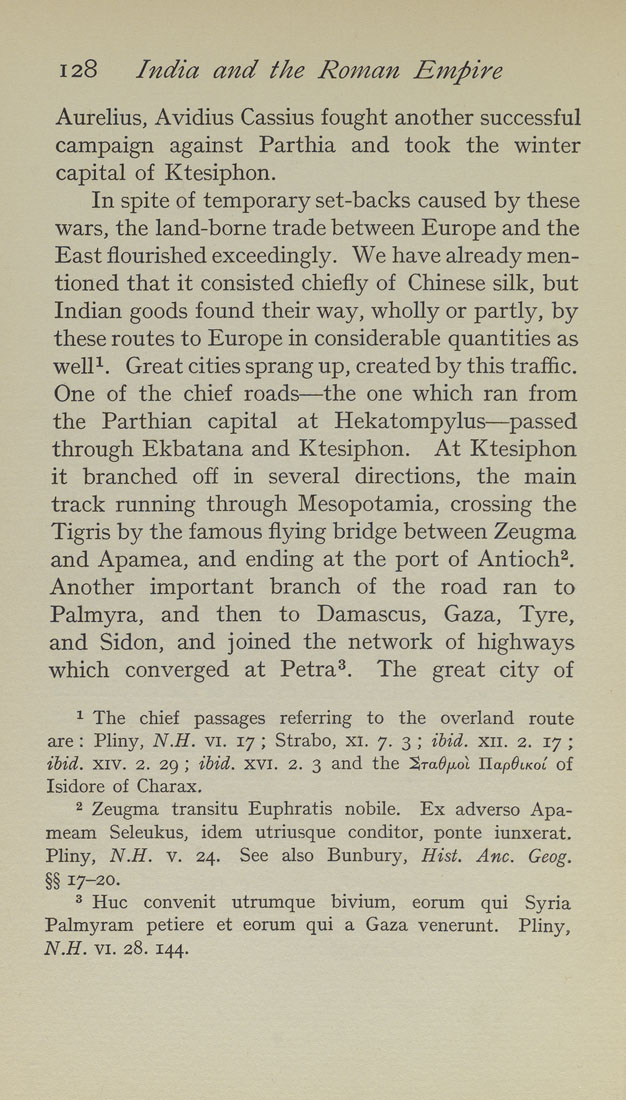128 India and the Roman Empire
Aurelius, Avidius Cassius fought another successful
campaign against Parthia and took the winter
capital of Ktesiphon.
In spite of temporary set-backs caused by these
wars, the land-borne trade between Europe and the
East flourished exceedingly. We have already men¬
tioned that it consisted chiefly of Chinese silk, but
Indian goods found their way, wholly or partly, by
these routes to Europe in considerable quantities as
welP. Great cities sprang up, created by this traffic.
One of the chief roads—the one which ran from
the Parthian capital at Hekatompylus—passed
through Ekbatana and Ktesiphon. At Ktesiphon
it branched off in several directions, the main
track running through Mesopotamia, crossing the
Tigris by the famous flying bridge between Zeugma
and Apamea, and ending at the port of Antioch^.
Another important branch of the road ran to
Palmyra, and then to Damascus, Gaza, Tyre,
and Sidon, and joined the network of highways
which converged at Petra^. The great city of
^ The chief passages referring to the overland route
are : Pliny, N.H. vi. 17 ; Strabo, xi. 7. 3 ; ibid. xii. 2. 17 ;
ibid. XIV. 2. 29 ; ibid. xvi. 2. 3 and the Sra^/xoi UapOiKot of
Isidore of Charax.
2 Zeugma transitu Euphratis nobile. Ex adverso Apa-
meam Seleukus, idem utriusque conditor, ponte iunxerat.
Pliny, N.H. v. 24. See also Bunbury, Hist. Anc. Geog.
§§ 17-20.
^ Hue convenit utrumque bivium, eorum qui Syria
Palmyram petiere et eorum qui a Gaza venerunt. Pliny,
N.H. VI. 28. 144.
|








